序章
この多彩なデジタル時代において、 LED表示画面 light up every corner of commercial advertisements, conferences, and exhibitions with their unique charm.
However, as people’s requirements for display effects are increasing, traditional single screens can no longer meet everyone’s desire for interaction and fun.
Therefore, the dual-screen interactive LED display screen came into being. It is like a fresh breeze, bringing new vitality and possibilities to the display world. Today, let us unveil its mystery and see the implementation methods and wonderful applications behind it.
1. What is the dual-screen interaction of LED display screens?
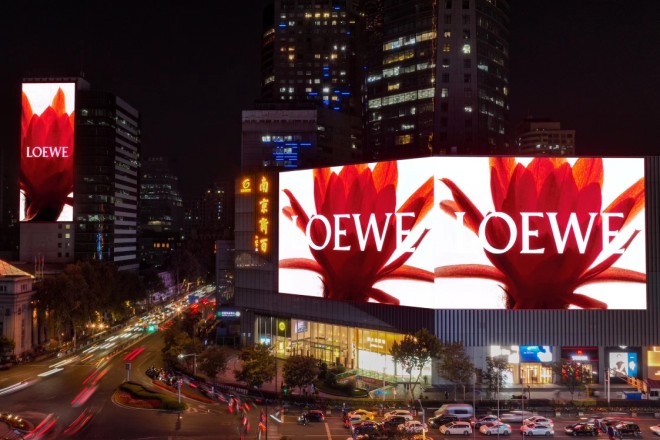
The dual-screen interaction of LED display screens refers to the interaction or collaboration of two or more LED display screens in the display content, jointly displaying the same theme or related information and being able to achieve cross-screen interactive effects.
This technology is usually implemented through specific software systems and hardware devices so that the two screens can transmit information in real-time, display synchronously, or perform interactive operations.
Taking the cross-screen interaction of the two huge LED display screens in Changsha Huangxing Square on Valentine’s Day as an example, this is a typical application scenario of dual-screen interaction of LED display screens.
The two screens may display different contents respectively, but information synchronization or interaction is achieved through some means (such as wireless network, control system, etc.), thus creating a more vivid and interesting visual effect, attracting the audience’s attention and enhancing their sense of participation.
1). Analysis of the effect of dual-screen interactive technology
- Significant improvement of visual effects:
Dual-screen interactive technology can create more shocking visual effects through the collaborative work of two screens.
For example, in a performance or exhibition, one screen can be used as the main ステージ background and the other screen as the interactive area.
By synchronously playing related pictures or animations, a more realistic and three-dimensional performance atmosphere can be created.
- Diversification and efficiency of information communication:
Dual-screen interactive technology can not only display the main information on one screen, but also provide supplementary information or detailed instructions on the other screen.
This display method not only helps the audience to better understand the information content, but also improves the efficiency and accuracy of information communication.
At the same time, through the flexible layout and content adjustment of the two screens, it can meet the display needs in different scenarios and bring a richer visual experience to the audience.
2. Implementation method of dual-screen interaction of LED display screen
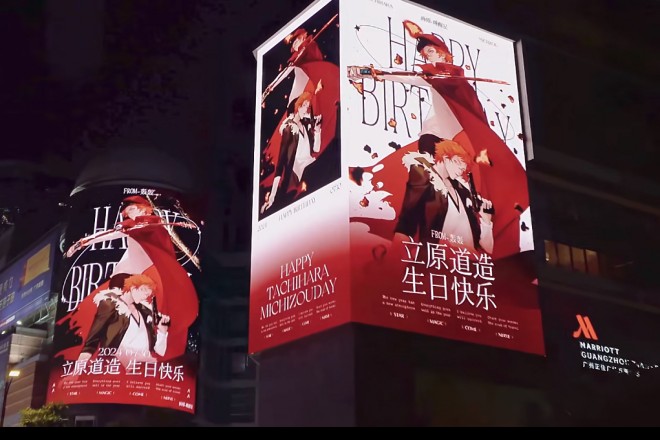
1). Device connection:
To make the 2 LED displays interactive, they must first be “connected.” There are two main ways:
One is through real cables, such as HDMI cables, DVI cables, etc., which are like information highways that transmit data from one device to another
The other is to use wireless technology, such as Wi-Fi or Bluetooth, which is more flexible and not limited by cables, but you may need to pay attention to signal strength and stability.
No matter which method, we must ensure that the connection is stable and the data transmission is fast so as to ensure that the information synchronization between the two screens is not delayed or stuck.
2). Software installation and configuration:
Next, we need to install special software on the main control device-dual screen interaction software.
This software is like the “commander” of the two screens. It is responsible for handling all information transmission, synchronous display, and interactive logic.
After installing the software, we also need to perform a series of configurations, such as setting the screen 解決, リフレッシュレート, etc., to ensure that the two screens can work perfectly together and present the best visual effects.
These configurations are like “customizing” a set of instructions for the software so that it knows how to better control the two screens.
3). Content production and uploading:
With the “skeleton” of connection and software, the next step is to fill in the “soul.” We can produce various graphics, audio, and video content according to the needs of the display.
These contents should not only be attractive but also interactive so that the audience can feel involved in the viewing process. After the production is completed, we can upload the content to the software platform.
The software will automatically process these contents and distribute them to the two screens. In order to ensure the real-time and accuracy of the content, the software also provides two mechanisms, automatic synchronization, and manual update, so that we can choose according to the actual situation.
4). Display and control:
The last step is to control the display content and method of the two screens through the main control device. We can choose what content to display, how to layout, and what animation effects to add.
More importantly, we can also set different interactive modes. For example, after clicking a button on screen A, screen B will display the corresponding content or perform a specific action.
This kind of interaction not only makes the display more interesting but also allows the audience to participate in the display more deeply and enhance their experience. It is like adding a pair of “eyes” and “ears” to the two screens, allowing them to “see” and “hear” the needs of the audience and respond accordingly.
3. Application scenarios of dual-screen interaction of LED display screens
As a novel and attractive, interactive method, dual-screen interaction of LED display screens has been widely used in multiple entertainment venues and specific occasions. Here are some specific application scenarios:
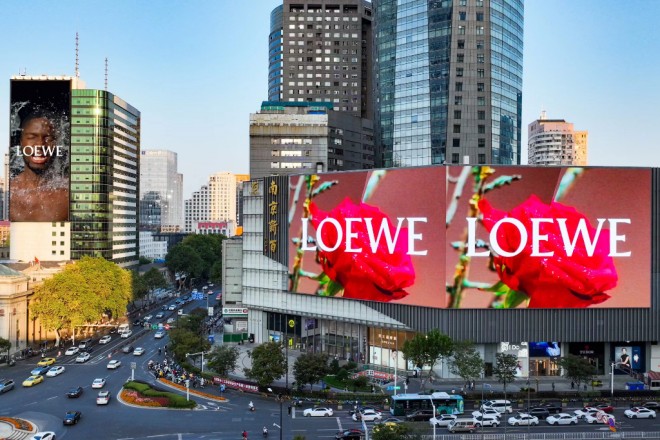
1). Entertainment venues
With dual-screen interactive technology, bars can create a unique atmosphere. For example, one screen plays music videos or live performances, while the other screen displays lyrics, interactive games, or customer messages, increasing the customer’s sense of participation and entertainment experience.
- Concerts
At the concert site, dual-screen interactive technology can be used to display singer information, scroll lyrics, and audience interaction.
One screenplays live performances, and the other screen provides interactive links, such as audience voting, message scrolling, etc., to enhance the interactivity and viewing of the concert.
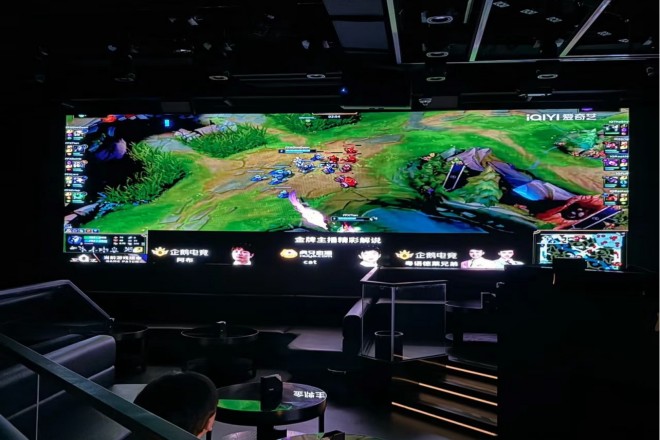
2). ショッピングモール and festival celebrations
Shopping malls often use dual-screen interactive technology to attract customers during festivals (such as Valentine’s Day, Mid-Autumn Festival, Christmas, etc.).
One screen displays holiday-themed advertisements or promotions, while the other screen provides interactive experiences, such as scanning codes to participate in draws, receiving coupons, etc., to increase customers’ shopping fun and participation.
- 祭りのお祝い
During various festival celebrations, dual-screen interactive technology can be used to display information such as festival culture, historical background, and event flow.
4. Technical challenges and solutions for dual-screen interaction of LED displays
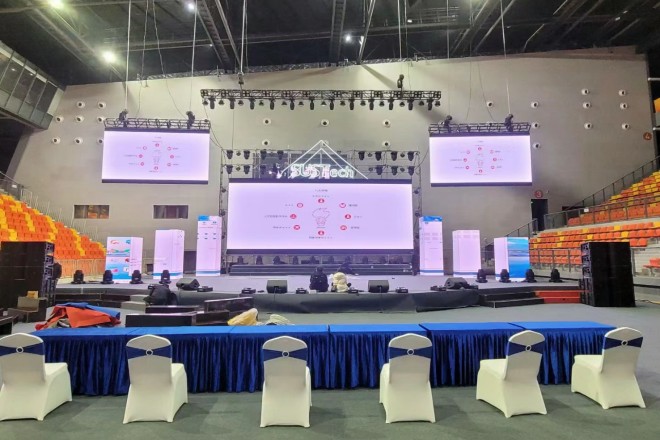
1). Content synchronization between screens
In the dual-screen interaction of LED displays, it is crucial to ensure that the content displayed between two or more screens is synchronized in real-time.
However, due to factors such as data transmission delays and device performance differences, the content between screens may be out of sync.
- インパクト:
Content asynchrony will reduce the audience’s viewing experience and may even lead to misunderstanding or confusion of information.
2). Clarity of interaction logic
Dual-screen interaction of LED displays requires the design of clear interaction logic to ensure that users can easily switch and interact between the two screens.
However, due to differences in screen size, resolution, operation mode, etc., it may be challenging to design clear interaction logic.
- インパクト:
Unclear interaction logic may cause user operation difficulties and reduce the interactive experience.
3). Data transmission and stability
In the dual-screen interaction of LED display screens, it is necessary to ensure that data is transmitted stably and quickly between the two screens.
However, due to factors such as network delays and equipment failures, data transmission may be unstable or interrupted.
- インパクト:
Unstable data transmission will affect the smoothness and real-time performance of dual-screen interaction.
4). Solution
4.1). Optimize software algorithm
By optimizing the software algorithm, the accuracy and real-time performance of content synchronization between screens can be improved.
For example, technical means such as timestamp synchronization algorithm and frame synchronization algorithm can be used to ensure content synchronization between screens.
The optimized software algorithm can significantly reduce the probability of content asynchrony and enhance the audience’s viewing experience.
4.2). Increase data transmission speed
By increasing the data transmission speed, data transmission in dual-screen interaction can be ensured to be more stable and fast.
For example, technical means such as high-speed network interface and optimized data transmission protocol can be used to increase the data transmission speed.
Increasing the data transmission speed can significantly reduce data transmission delays and interruptions, and enhance the smoothness and real-time performance of dual-screen interaction.
4.3). Enhance device performance and stability
By enhancing device performance (such as increasing processor speed, increasing memory capacity, etc.) and stability (such as adopting redundant design, enhancing heat dissipation, etc.), the stability and reliability of dual-screen interactive devices during long-term operation can be ensured.
Improving device performance and stability can reduce device failures and performance degradation and improve the reliability and durability of dual-screen interaction.
結論
In short, the dual-screen interactive LED display screen not only realizes the synchronous display of information through clever design and technological innovation but also makes interaction simple and interesting.
Although there are some small challenges on the road to perfection, such as the accuracy of content synchronization and the smoothness of interactive logic, these are just small stones on the road ahead.
最後に、LEDディスプレイスクリーンについてさらに詳しく知りたい場合は、 ご連絡ください。
